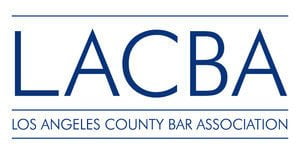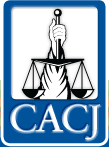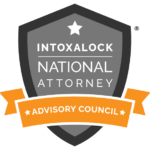
Can You Go to Jail for Confessing your Crime to your Priest? “Rules of Evidence”
In any legal case, be it a criminal or civil trial, both the prosecution and defense will need to present evidence to support their respective cases. This evidence may take many forms, from eyewitness testimony to physical evidence like DNA samples. In order to ensure that only reliable and relevant evidence is considered by the court, there are a set of rules that govern what can and cannot be admitted as evidence. These rules are known as the rules of evidence.
In California, the rules of evidence are governed by the state’s Evidence Code. This code sets out what types of evidence are admissible in court, how this evidence can be presented, and what restrictions apply to its use. For example, hearsay evidence (based on what someone has heard rather than what they have personally witnessed) is generally not admissible in court. However, there are exceptions to this rule, such as when hearsay evidence is being used to impeach a witness or establish an alibi.
The rules of evidence can be complex, and even experienced attorneys can find them difficult to navigate at times. However, these rules are essential for ensuring that the court considers only reliable and relevant information. By understanding the basics of the Evidence Code, both lawyers and laypeople can ensure that justice is served in every case.
- Rules on Relevance and Foundation
According to Evidence Code 210, to be admissible in a California Court of law, the evidence must be relevant to the case and have a proper foundation. Evidence is considered relevant if it tends to make a fact more or less probable. The foundation is the evidentiary basis supporting the relevance of the evidence.
For example, if you are trying to prove that it was raining outside at the time of an accident, testimony from a witness who saw the rain would be admissible, but a note from the weatherman would not. The note would not be admissible because it does not have a proper foundation; the witness who saw the rain can testify that he or she personally observed the rain, establishing a proper foundation for the evidence.
- Hearsay Rules
The hearsay rule is a rule of evidence that prohibits the use of out-of-court statements to prove the truth of the matter asserted. In other words, hearsay evidence is not admissible to prove that what was said is true. The rationale behind Evidence Code 1200 is that such evidence is unreliable because it is not subject to cross-examination. However, there are many exceptions to the rule, and courts will often admit hearsay evidence if it is determined that the statement is trustworthy. The hearsay rule is codified in the California Evidence Code, and it applies to all criminal and civil proceedings in the state.
A classic case of hearsay in a California domestic violence case is when a victim in the case says in an interview that she was scared of the defendant when she was dating him—but the victim does not actually testify at his trial.
- Rules on Witnesses
When you’re preparing for a trial, one of the most important things, according to the Evidence Code 700- 795, is that you’ll need to do is choose which witnesses to call. Generally speaking, a witness can only testify to what they saw, heard, or experienced firsthand. This means that a witness cannot give testimony about what someone else told them, or what they think happened. This rule is designed to prevent hearsay evidence from being used in court. However, there are some exceptions to this rule. For example, if a witness is testifying about a conversation they overheard, they may be able to repeat what was said verbatim if it is relevant to the case. Additionally, expert witnesses may be able to give opinion testimony based on their expertise and experience.
California’s Evidence Code also binds lawyers on how they question witnesses. For example, lawyers are not allowed to ask “leading questions.” These are questions that already suggest the answer to the question being asked. Ultimately, it is up to the judge to decide whether or not a witness’s testimony is admissible in court.
- The Character Evidence Rule
The character evidence rule is a legal principle that governs the admissibility of evidence relating to a person’s character. The rule is designed to prevent unfair prejudice against a defendant by preventing the jury from considering evidence of the defendant’s bad character.
Consider a defendant who is facing a murder charge. In that situation, the prosecution is prohibited from using evidence of the defendant’s violent past to show that they were the murderer.
This implies that the prosecution cannot use your previous bad deeds or crimes as evidence that you committed this specific crime.
- The Authentication Rule
The Authentication Rule is a rule of evidence that requires certain types of evidence to be authenticated to be admissible in court. The Rule is found in the California Evidence Code, and it states that “evidence is not admissible unless it is authenticated by testimony that it is what it purports to be.”
This means that, for certain types of evidence to be considered by the court, there must be someone who can testify that the evidence is what it is purported to be. The types of evidence that must be authenticated under the Rule include documents, photographs, and recordings. The Authentication Rule is designed to ensure that the court considers only reliable and trustworthy evidence.
- Evidentiary Privilege Rules
These rules define what types of evidence can be considered privileged and how the privilege can be waived or overcome. Generally speaking, evidentiary privileges protect communications between certain parties from being disclosed in court. The most common evidentiary privileges in California are the attorney-client privilege and the doctor-patient privilege. Other less common privileges include the priest-penitent privilege and the spousal privilege. In order for a privilege to apply, the communication must have been made in confidence and for the purpose of seeking legal or professional advice. If either of these conditions is not met, then the privilege may be waived or overcome. In some cases, a judge may also decide to waive or override a privileged communication if it is deemed to be in the interests of justice.
California evidentiary privilege rules are confusing and sometimes contradictory. For example, the rule governing spousal testimonial privilege is unique in that it allows one spouse to testify against the other in some circumstances but not others. The reason for this is that California law recognizes that marriage is both a personal relationship and a legal contract. As a result, the courts have concluded that spousal testimonial privilege should be narrowly construed in order to protect both the individual rights of each spouse and the public interest in having all relevant evidence presented in court.
Your Constitutional Fifth-Amendment right not to give self-incriminating testimony also counts as an evidentiary privilege. This is why it is important to know what to do when you get pulled over by the police for a DUI, for example.
Because of the complex and ever-changing nature of evidentiary privilege rules, it is always advisable to consult with an experienced attorney before giving any testimony in court.
- Exclusion of Evidence Deemed Confusing, Misleading, or Prejudicial
In a criminal trial, the jury is tasked with making a decision based on the evidence that is presented during the trial. However, there are times when certain evidence may be deemed confusing, misleading, or prejudicial, and as a result, it may be excluded from the trial. Confusing evidence is typically defined as evidence that is so complex or confusing that it would make it difficult for the jury to understand its significance. Misleading evidence is evidence that would lead the jury to believe something that is not true.
And finally, prejudicial evidence is evidence that would unfairly bias the jury against one of the parties in the trial. While all three types of evidence may be excluded from a criminal trial, each type has its own specific legal requirements that must be met for the exclusion to be granted. As a result, it is important to have an attorney who is familiar with these requirements and can effectively argue for the exclusion of any harmful evidence.
If you’re facing criminal charges like a DUI in California, the last thing you want to do is try and go it alone with your own evidence. The state’s rules of evidence are complex, and unless you have a working knowledge of them, you could find yourself at a serious disadvantage. An experienced criminal defense attorney will know how to use the rules of evidence to your advantage and will fight tirelessly to get the best possible outcome for your case. So if you’re facing criminal charges in California, call Criminal Defense Heroes, P.C. now at +1 323-529-3660 to discuss your case. We may be able to help you avoid a conviction entirely or get the charges against you reduced.









